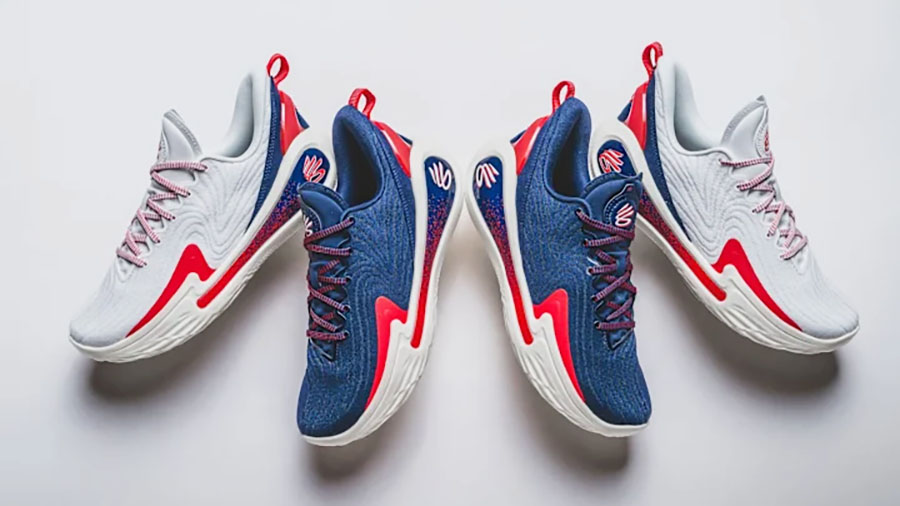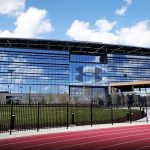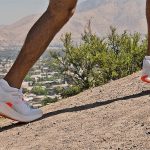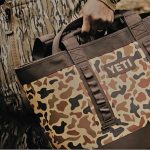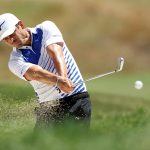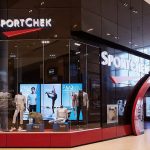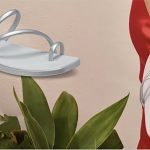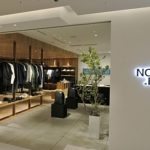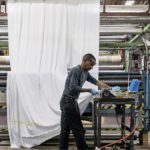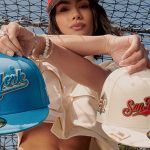Under Armour, Inc. saw another quarter of progress in its turnaround efforts but refrained from providing guidance for the full year due to the tariff situation. Officials told analysts the company is exploring “a range of mitigation strategies” to offset tariffs, including cost sharing, sourcing diversification and potential price adjustments.
Under Armour limited its outlook to the first quarter, forecasting a decline in the period ranging from 4 percent to 5 percent that marks an improving sequential trend versus the 11 percent decline in its just-completed fourth quarter.
Under Armour CFO, Dave Bergman, said, “If you think about it, with the tariff rates, they’re pretty much temporary at this point. They may change significantly. So, we don’t feel it’s prudent to give an outlook that will also have to change and be adjusted from announcement to announcement.”
Under Armour’s margins could take a hit if President Trump’s imposition of a 46 percent tariff on imports from Vietnam and a 32 percent levy on Indonesian goods comes into effect in July, unless the administration reaches a favorable agreement.
Bergman noted that Under Armour sources about 30 percent of its overall merchandise volume from Vietnam, roughly 20 percent from Jordan and 15 percent from Indonesia. The remaining one-third of product is diversified across several other countries.
Bergman said, “This deliberate diversification creates a well-balanced portfolio, reducing reliance on any single market and enhancing our ability to navigate geopolitical, costs and supply chain complexities from a position of strength.”
Reflecting on his return to the CEO role 13 months ago, founder Kevin Plank on the call said that Under Armour exceeded or met its initial outlook for the year provided last May for every line item, and he particularly highlighted the improving trend within gross margin. A priority in the turnaround is streamlining product assortments and inventories while building brand heat to reduce the need for promotions.
“As we near the completion of our initial 25 percent SKU reduction over the past year, we’re maintaining disciplined inventory management to create space for a stronger, more focused product architecture,” said Plank. “Together, these steps will drive brand momentum, enhance profitability, and unlock new growth opportunities. Our ambition, put simply, is to sell so much more of so much less at a much higher full price.”
The CFO noted that before the tariff announcements, Under Armour anticipated a “modest revenue” decline in its fiscal year ended March 2026, marking a continued improving trend versus a drop of 9 percent in its just-completed year.
Bergman said Under Armour has not seen any cancellations resulting from the tariff dispute. He further noted that feedback has been “positive” from wholesale retail partners on the new product as the brand works to win back shelf space as it attempts to return to growth in the back half of the current fiscal year. The CFO said, “I think that there are clear improvements in the design and style that are being noted by our partners. So regaining shelf space takes time as you think about the back half of the year, but our focus and execution are improving, and we’re seeing those results.”
Fourth-Quarter Sales Drop 11 Percent
In the fourth quarter ended March 31, revenues declined 11.4 percent to $1.18 billion, slightly topping analysts’ consensus target of $1.17 billion. Revenues were down 10 percent on a constant-currency (c-c) basis.
By region, North American revenue declined 10.7 percent to $689 million, primarily due to a decrease in its DTC business, largely due to lower e-commerce sales resulting from ongoing efforts to limit promotional activities. Owned and operated stores also saw a sales decline. Wholesale channel revenues experienced a decrease in full-price sales, which was partially offset by an increase in the timing of sales to the third-party off-price channels.
Revenue in EMEA decreased 1.9 percent to $278,6 million, although sales were flat on a c-c basis. The decline in full price wholesale was partially offset by growth in DTC, distributor and off-price businesses.
Aligned with expectations, revenue in the APAC region slumped 27.3 percent (26 percent on a c-c basis) to $164.8 million. This decrease was primarily due to the highly competitive and promotional environment and Under Armour’s efforts to reduce promotional sales in the region. Within Latin America, revenue declined 10.3 percent to $45.1 million, primarily due to unfavorable foreign exchange impacts. Without FX, currency-neutral revenue rose 3 percent in the quarter, driven by distributor sales.
From a channel perspective, wholesale revenue slid 9.7 percent to $767.6 million, driven by lower full-price sales, partially offset by growth in the off-price channel, and the timing of those sales to third-party partners.
DTC revenue was down 15.1 percent to $386.1 million, mainly due to a 27 percent decrease in e-commerce sales from ongoing efforts to establish a more premium online presence through fewer promotions and discounts. Sales at owned and operated stores declined 6 percent during the quarter. Licensing fell 15 percent, primarily due to the decision to bring the socks business in-house.
By product type, apparel revenue was down 11.1 percent to $780.4 million, with softness across most categories in the quarter, partially offset by strength in outdoor. Footwear declined 16.5 percent to $281.8 million, reflecting in part ongoing proactive portfolio management efforts to optimize segmentation and assortment. Accessories sales were up 2.3 percent to $91.5 million, with strength in team sports and run and benefiting from the move to bring socks in-house.
Gross Margins Improve 170 Basis Points
Under Armour posted a loss of $67.5 million, or 16 cents a share, in the quarter, against earnings of $6.6 million, or 2 cents, a year ago. Excluding non-recurring charges related to a legal settlement, restructuring-related expenses and impairment charges, the adjusted net loss came to $34.7 million, or 8 cents a share, against adjusted earnings of $49 million, or 11 cents, a year ago.
Gross margins increased 170 basis points year-over-year to 46.7 percent. The improvement reflects 150 basis points of supply chain benefits due mainly to lower product and freight costs; 80 basis points of pricing benefits, primarily from lower discounting and promotions in its DTC business and some impact from more favorable royalty terms.
SG&A expenses, excluding non-recurring items, were up 7 percent versus year-over-year as higher marketing expenses and incentive compensation was only partially offset by savings from ongoing cost management efforts, including lower consulting expenses.
Under Armour’s operating loss in the period on a reported basis was $72 million against an operating loss of $3.6 million a year ago. The adjusted operating loss was $36 million against adjusted operating income of $54 million in the prior year.
Under Armour recognized $32 million in net restructuring charges in the quarter. So far, under the fiscal 2025 restructuring plan, $89 million in restructuring charges and related transformation expenses have been recognized, of which $55 million is cash-related and $34 million is non-cash. Total charges and expenses under the plan remain within a range of $140 million to $160 million, and the company expects to incur them by the end of fiscal 2026.
CEO Commentary
Plank highlighted steps the company is taking to simplify its product portfolio, streamline operations, exit “lower value activities,” and improve its financial condition. He said, “We’re working to run a more agile demand-led model that keeps us aligned with athletes and well-positioned to regain market share and expand margins over the long-term.”
On product, he noted that HeatGear base layer outperformed expectations in the latest quarter, the Unstoppable collection delivered “strong results” and sportswear is “gaining meaningful traction.” Footwear launch highlights during the quarter included the SlipSpeed Echo and the Curry 12. He highlighted successful collaborations such as one with Mansory and the upcoming releases of the UA Halo collection and NeoLast base-layer technology.
Plank said, “As we look toward Fall/Winter 2025, our product direction continues to sharpen, and our design language is becoming more cohesive. Our priorities are clear: win in men’s apparel, unlock the full potential of footwear and strengthen our connection with women, starting with trusted essentials like bras and bottoms and then building from there to grow their affinity for Under Armour.”
Plank added that Under Armour’s “North American transformation is well underway.“ He noted progress in UA’s e-commerce channel, delivering over a 10-point increase in the full-price sales mix with double-digit AUR (average unit retail) growth. At factory house stores, store-wide sales events are being “significantly“ reduced, with some products being offered at full price all year. The outlet stores’ focus remains on SKU rationalization “to create a more curated premium experience,“ said Plank.
At NA wholesale, Under Armour continues strengthening key relationships focused on the sell-through of “fewer products“ rather than the sell-in. Plank said, “Our category-led model significantly helps there, combined with the sharpened go-to-market discipline that we expect will result in greater demand from both the consumers we have today and the new ones we are inviting to engage with us.”
In EMEA, its top-performing region last year, the focus will be on key growth markets like France, Spain and Germany. APAC will continue to undergo a reset, focusing on streamlining inventory and reducing discounts to “foster sustainable premium growth.”
Regarding marketing, Plank called out the importance of “distinct storytelling strategy aligned with our product vision, establishing a cohesive brand voice across all touchpoints.“ He said distinctive storytelling is expected to elevate relevance and brand differentiation.
“We’re not increasing our marketing spend,“ Plank said. “Instead, we’re making it work harder with an annual budget of roughly $500 million in some of the world’s top sports athletes and assets, we’re reallocating resources more intentionally to generate greater brand heat and engagement.”
Image courtesy Under Armour Curry 12

